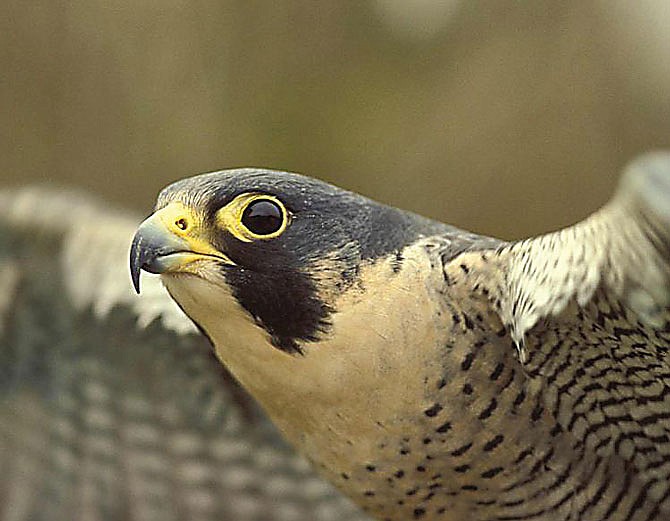Where the Missouri River and its rocky bluffs mark the border of Callaway County, you might expect a peregrine falcon to feel right at home.
Peregrine falcons nest and breed on the ledges of river bluffs - historically, some made their homes along the Mississippi, Missouri and Gasconade rivers. But there aren't any known nesting pairs locally.
For many years, finding a peregrine falcon nesting anywhere in Missouri would have been difficult. The species was nearly eradicated in the United States due to the harmful effects of DDT and other pesticides.
But in recent years, conservationists have found success reintroducing the species to Missouri.
Now, the state is considering removing the species from its endangered species list.
"This basically means that through partnerships and people working together, we have brought back the fastest wildlife species on the planet to Missouri," said Joe DeBold, Missouri Department of Conservation urban wildlife biologist and falcon recovery lead.
There might not be any peregrine falcon nests in Callaway County, but 14 known pairs are actively breeding elsewhere in the state. Since 2013, 222 chicks have hatched in Missouri. Bands placed around their feet identify them as Missouri hatchlings.
Widespread use of DDT pesticides almost killed the species in the U.S., with populations dwindling between the 1940s and 1960s. The pesticide was banned in 1972 in part because birds who ate prey infected with the pesticide began laying eggs with shells too thin to support the weight of incubating birds.
It's unknown exactly how many peregrine falcons might have lived in Missouri before the near-eradication, but DeBold said numbers are now higher than they were in the 1950s when conservationists began counting.
Today, many peregrine falcons live in man-made nesting boxes installed on skyscrapers, bridges and other urban infrastructure. In turn, humans appreciate the chance to watch eggs hatch through webcams.
Many peregrine falcons seem to prefer these new urban homes to the cliffsides they once nested on, but some have been documented nesting on bluffs on the Illinois side of the Mississippi River, DeBold said.
Peregrine falcons are migratory and can reach speeds of more than 200 mph while dropping on prey. Many of the chicks hatched in Missouri don't come back to nest.
"It is a giant Midwest project," DeBold said. "We may have falcons that come out of a nest here in Missouri that end up nesting in Iowa."
DeBold said one Kansas City hatchling opted to go south.
"Its home now is a building in downtown Dallas," he said.
DeBold said the falcons will remain a species of conservation concern in Missouri, and the team will continue to monitor numbers.
"We will still be proactive in putting out new nest boxes in optimal locations," he said.
According to the regulation change submitted to the Missouri Conservation Commission, if the breeding population falls below seven adult pairs, the Peregrine Falcon Recovery Working Group will investigate the cause and MDC will determine whether expanded protection is needed.
Before the commission can hold a final vote on whether to change the status of peregrine falcons, it must collect public comments. Public comments can be submitted at bit.ly/3aaeFTc from March 2-31 or mailed to Regulations Committee Chairman, Department of Conservation, P.O. Box 180, Jefferson City, MO 65102-0180.
MDC is also considering allowing five annual master falconer permits for the capture of young wild falcons. This would only apply to first-year birds migrating through Missouri - permit holders would not be allowed to take adult birds or any of the birds hatched in Missouri, which are identified by leg bands.
If approved, the regulation and status change will become effective Aug. 20.
Once the birds begin laying eggs between April and June, the public should be able to watch the birds nesting at the Ameren Missouri Sioux Energy Center at bit.ly/3pnT8wO.
DeBold said people love watching the birds.
"What I have seen is how this bird connects with people and people really connect with this bird," DeBold said.

